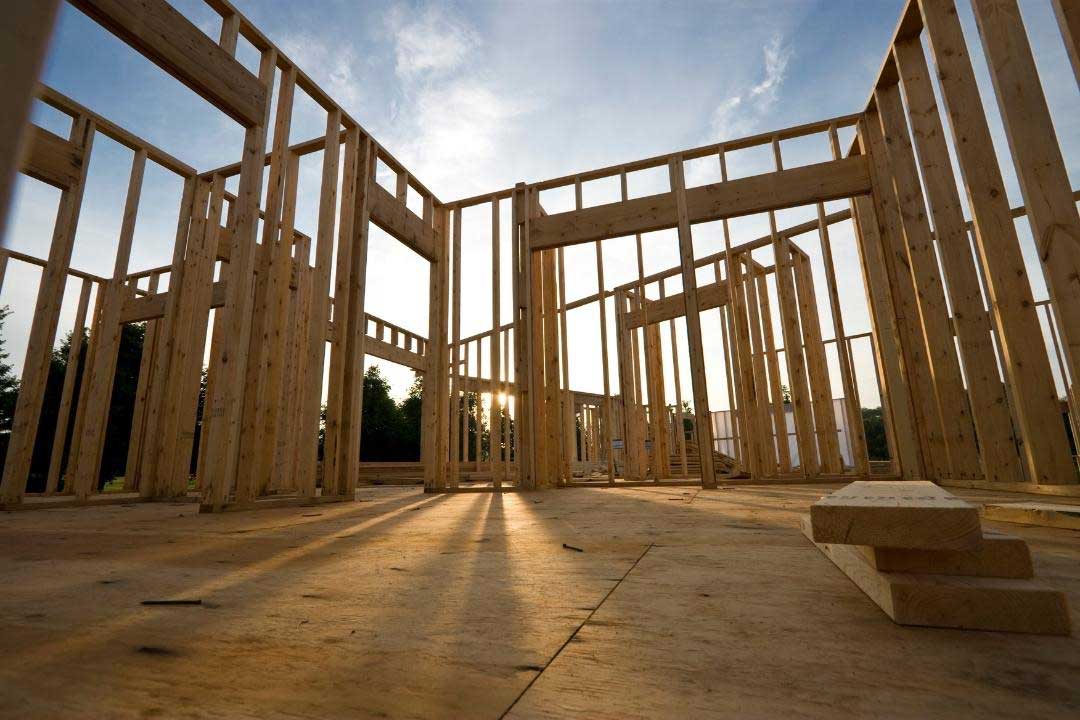Securing a builders’ line of credit is essential for investors, builders, or developers engaged in multiple projects annually. Unlike standard bank mortgages, this specialized loan caters to those working on complex projects simultaneously. Tailored for investors and builders, these developers’ loans are ideal for constructing small home clusters to large subdivision developments. They provide the financial flexibility needed to manage and complete various properties under a single line of credit.
From the borrower’s point of view, a line of credit arrangement offers more flexibility and convenience than a traditional construction loan. With traditional forms of construction lending, funds are disbursed based on a strict set of milestones and completions. Each new disbursal requires a major administrative effort on the part of the developer, general contractor, and the lender themselves to document everything they have completed to date to justify the next release of funding.
With a builders’ line of credit, on the other hand, lenders pre-determine the total amount to be lent. The contractor draws what they need, as they need it. As the borrower receives revenues, they can pay down their line of credit to reduce their cost of capital, and draw upon it again as the need arises.
With a contractor’s line of credit arrangement, lenders don’t micromanage the details of project completion, and impose fewer hurdles when it comes to the release of funds.
Normally, the builders’ line of credit amount and interest rate are based on the project’s anticipated liquidity and collateral, rather than on your business or personal credit rating or income.
Both builders’ line of credit and traditional builders’ loans are designed to be short-to-medium term financing solutions, to get the project completed and sold or leased out. At that point, the builder will either refinance to a lower-rate, permanent loan, or sell outright and pay the loan off entirely.
Is a builders’ line of credit right for me?
A builders’ line of credit can be a great solution for developers, fix-and-flip investors, rehabbers, builders, business owners, and others who have bigger or more complex construction plans.
Consider a builders’ line of credit if you have a commercial construction or extensive remodeling project you want to do, or you want to build more than five residential properties simultaneously, or nearly simultaneously, on the same loan or LOC. They can also work well if you’re building on scattered lots or doing infill projects. They are suitable both for residential and commercial real estate projects.
If you’re building anywhere from 1 to 4 residential units, you should look at residential construction loans.
Because a line of credit is not entirely tied to project completion milestones on one specific project, you can use them to help pay for both hard and soft costs, and costs not necessarily associated with a single project. The line of credit arrangement gives you that flexibility.
Builders’ line of credit vs. HUD construction loans
HUD construction loans offer high LTVs, low interest, and a lot of capacity for large projects. They also offer longer terms – up to 35 years. But approvals can take a year or more. HUD loans are best for very experienced, seasoned builders.
Private builders’ line of credit loans and private construction loans may have higher rates, but can be underwritten and funded much more quickly. This can get your project underway and on the road to completion that much sooner, potentially reducing your overall cost.
If you’re less established, or you’re just ready to get started now, instead of months from now, a builders’ line of credit from a private or non-bank lender may suit your needs better.
Typical builders’ line of credit terms
If your loan application is successful, you should receive one or more letters of interest. Once the lenders’ requests for more information are satisfied, you’ll receive a commitment letter, detailing the proposed loan terms.
These will include the total maximum line of credit, the collateral securing the loan, the interest rate, and the amount and timing of payments. The commitment letter will also include any contingencies on the release of funds, including the receipt of construction plans, pro-formas, appraisal documents, title checks, environmental reports, permits, or certificates of insurance from your general contractor.
The letter will also detail any covenants and restrictions on the loan, and what specifically must happen as each funding milestone is reached, or as you need to draw additional funds.
Generally, these developer’s credit lines have repayment terms of 12 to 24 months. They often have an option to extend the loan. This can be very handy in quickly putting off a looming balloon payment if construction is delayed, or if market conditions change and make it difficult for developers to sell or lease their properties as originally projected.
Lenders will usually consider funding up to 90% loan-to-cost (LTC), or up to 70% of loan-to-value (LTV), defined as the ultimate projected value of the project after completion, lease-out, and stability. However, for certain situations, we have some more creative financing solutions available, as well.
Interest rates
The interest rate on your line of credit could be fixed and level, or it could vary based on a reference rate, and recalculated periodically. For example, your rate could be the prime rate plus X percent, adjusted monthly.
Construction loans and lines of credit have higher interest rates than loans on mature and stabilized properties with steady rent flows, all other things being equal. But because the terms are usually short, the interest rate may not be as important as having favorable terms, minimal restrictions and covenants, no prepayment penalties, speed of closing, flexibility, ease of draws, or overall loan amounts. Look at the whole package in the context of project completion, not just the interest rate.
Debt service coverage
Lenders in this space will also look carefully at your debt service coverage ratio, or DSCR. This is the ratio of your projected net cash flow from the properties compared to the amount needed to pay projected principal and interest payments. The higher the ratio, the better the cash flow on the property.
Debt service coverage is normally at least one, and more typically ranges from 1.2x to 1.6x principal and interest costs.
Repayment terms
Most construction loans or lines of credit involve a deferred repayment. Little or no repayment is required in the early months of the loan. Instead, interest accrues throughout the construction period.
The loan will have a balloon payment due at the end of the term, unless you choose to extend or successfully refinance it.
What do builders’ line of credit lenders look at?
Depending on your situation and the structure of the loan, your builders’ line of credit lender may consider the following:
- The ultimate market value and feasibility of the project – taking into account all anticipated costs of capital and operational expenditures. Lenders may ask for up to five years of pro forma projections. These projections should detail both equity and debt funding sources as well as monthly or quarterly projected cash inflows and outflows from the properties.
- Value of collateral.
- The track record of the owners/partners and management team.
- Your personal financial statement and those of your equity partners.
- The track record and capacity of the builders, including the architects and general contractors.
- The owner’s/partner’s/sponsors’ equity stake. How much of your own money is at risk alongside the lender’s?
- The owner’s creditworthiness. Traditional commercial real estate lenders usually want to see personal FICO scores in the 700s and up. However, some niche lenders are willing to work with borrowers with scores in the 600s and even below.
Your general contractor
Your general contractor or construction manager, if you use a third party, will be a critical consideration for most lenders. Lenders will look carefully at your general contractor’s experience with similar projects, and their overall workload.
- Is the general contractor licensed, bonded or bondable, and insured?
- Do they have the throughput capacity to complete this project?
- How much other work is the contractor doing? Will they get overwhelmed by the workload?
A good general contractor will have a solid track record of successful completion of projects similar to yours. They’ll also maintain adequate insurance, and have various certificates, assurances, and other documents ready to go in a package to support your credit application.
Your general contractor can be a valuable partner in helping streamline the loan application process. An experienced GC can make it possible even for inexperienced developers to get access to a great construction loan or line of credit.
Builder and contractor tips
If you’re an investor or builder looking to line up financing for a complex project involving multiple properties, here are some tips and best practices to help you through the process.
- Understand your business model and strategy. Are you planning on selling soon after completion? Or do you plan to buy and hold? Your strategy will help determine what kind of financing will best suit your needs.
- Start early. Prepare a folder or Dropbox file with all relevant financial statements, tax returns, certificates of insurance, partner bios, property details, appraisals, pro formas, details of successfully completed projects, and anything else you’d want to know of a new partner all in one place, and clearly labeled and organized.
- Do due diligence on your general contractor. It’s better to do this on the front end than have a lender delay funding because they don’t have confidence in your GC.
- Note that just as you’re vetting your contractor, your contractor will be vetting you at the same time. They may ask some information of you to limit their counterparty risk and ensure themselves that you’re capable of seeing the project through to completion.
- Work closely with your contractor on the scope of work, projected costs, and time to completion. You’ll want to have this information ready when you apply.
- Your general contractor should be able to provide a packet supporting your application, anticipating most of the questions a lender will have about the contractors’ background and capacity for completing the work.
- Work with a mortgage broker like DAK Mortgage who understands the construction industry. The right broker will take your information and quickly identify the best lenders for your particular situation. From there, we can quickly and efficiently prepare an offering memorandum, and distribute it to the most promising lenders. This saves time, and potentially gives you a choice of several competing or complementary credit offers.
- Help us “tell your story.” The more we know about your background, strategy, and your plans for the properties themselves, the more effectively we can ‘sell’ your package to the right lenders.
- Be prepared for follow-on inquiries. You may get multiple LOIs from interested lenders. But they’ll typically come with requests for additional information. This is a normal part of the process. Don’t get frustrated or flustered. The more requests for additional underwriting information you get, the more interested the lender is!
Conclusion
DAK Mortgage is your go-to source for multi-property residential and commercial real estate investment and construction financing. If you’re a builder, developer or business owner, and you want to build multiple projects, or you have more complex construction financing needs, we’re ready to help you find the best financing solution possible.
When you engage us early in the process, we can help you anticipate what documents you’ll need ahead of time, and how to package your application, saving you both time and effort, and helping you get to project completion as quickly as possible.
Contact us today. We look forward to working with you.









